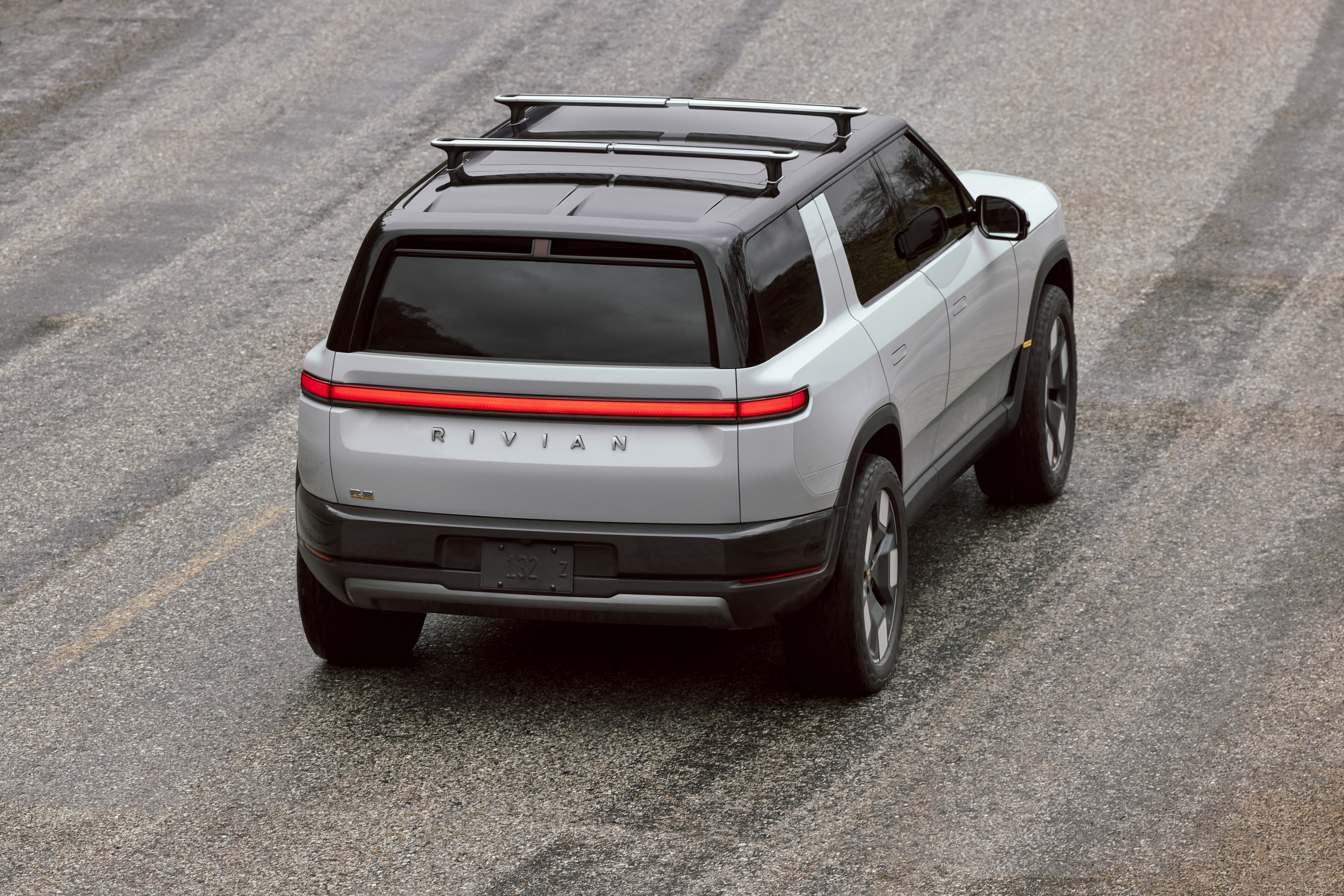
A recent news segment from a local Detroit media outlet is sure an interesting watch, but I do have to give readers a warning before watching it. Side effects of watching it may include elevated blood pressure and blood shooting out of the eyes. But, if you’re a Tesla Stan, you may instead experience uncontrollable bouts of “I told you so” and Electrify America derangement syndrome. Why? Because a local news personality decided to try driving an F-150 Lightning on a road trip with his family.
Before I get into my mixed thoughts on it, I want to first provide a quick recap for people who don’t like to watch videos or who are reading this in a place where you can’t watch a video.
The review starts with the news man trying to charge the car at home … with Level 1 charging. As you’d expect, trying to charge a large-battery vehicle like the Lightning on 12 amps of 120-volt power can be an exercise in patience. He couldn’t get that many miles overnight, and ended up having to drive to a DC fast charging station before heading out on the trip. This added a lot of frustration and wasted time to his experience.
When he did get his family loaded up, his frustrations continued. Instead of starting with a full battery at home, he started out with whatever was left after his away-from-home charging session. He then stopped to eat and plugged the car into a Level 2 charging station, where he claims to have only gained 3 miles of range in 1.5 hours. (I’ll get to this in a minute, I swear!) He then stopped for a Level 3 charge between dinner and the destination.
When he got where he was going, he took time away from the family to charge the car for the return trip (again at a DCFC station), and then needed to charge one time at an Electrify America station on the way home, which involved a wait because some of the stations were down. He ultimately made it home, but he felt like the trip was a much bigger hassle than it should have been because of all the charging and some of the charging hassles along the way.
The Obvious Solutions
Before I get into my own commentary on this, I want to first cover some of the other responses this video is sure to get. I’m not completely dismissive of them, but I want readers to know where I’m coming from first.
Yes, I know that some of you probably already skipped the rest of the article and went straight to the comments to tell us all about how much better this road trip would have been in a Tesla. Truth be told, you’re correct on that. The infrastructure Teslas rely on is usually a lot better than what he relied on for this review. I’m not going to try to tell you that you’re wrong if you think that a Tesla would have worked better here.
The big problem with ending the discussion there is that we can’t rely on that answer forever. As much as you guys love your Teslas, you also have to understand that the EV industry isn’t healthy if nobody else builds an EV. Monopolies have proven again and again historically to be bad for the consumer. Plus, everybody has different tastes, and not everybody appreciates Tesla’s minimalist (bordering on brutalist) interior and avant-garde exterior styling best exemplified by the Cybertruck.
So, we need the rest of the industry to do better and for people owning EVs to know how to get the most out of their EVs.
Health of charging infrastructure can’t rely totally on Tesla, either. They mention at the end of the review that Ford is going to switch to NACS for future vehicles, but as Tesla drivers are sure to find out, it’s not really going to be possible to serve everybody at Tesla stations. The monopoly issues aside (because I already discussed this), the simple fact is that we need everybody who can build and run a charging station well to be doing that if the EV transition is to be successful. The future need is just too great for any one entity to handle it all.
So, clearly, we need the whole industry to step up and get this right. “Just buy a Tesla.” and “They’re gonna use Tesla’s network.” are temporary solutions at best if we’re going to actually tackle transport electrification.
Education Is Still Key Either Way
Sadly, the issues plaguing this road trip weren’t all infrastructure-related. Even with a Tesla, there are aspects of this review article that still would have gone poorly.
The biggest problem was the lack of home charging. Sure, the guy was able to use Level 1 charging, and many readers get by on Level 1 charging for their daily driving needs. I’ve done it myself, and it’s definitely head-and-shoulders ahead of nothing. But, having somebody rely on a mix of L1 charging at home and DCFC around town doesn’t really represent the truth of EV ownership at all. To really show people what it’s like to own an F-150 Lightning, we have to keep in mind that Ford encourages people to work with its partners (especially Sunrun) to get home charging installed. Many other manufacturers work with Qmerit to pay for basic installations, and there are myriad local and utility company incentives that often cover the whole cost of charging installation.
So, when things happened as they should, the road trip would have started off at home with a 100% charge instead of away from home wasting time at a DC fast charger. Not cluing in TV viewers about the need for decent home charging did a real disservice, and any dealer not arranging for a Level 2 installation is missing out on profitable opportunities.
I can’t be sure what the issue is with only adding 3 miles of range at a Level 2 charging station that indicated over 7 kW on tap, but it was either a broken station that was cutting out, or it was a re-estimated range appearing on the “guess-o-meter” after highway driving. The latter is also a matter of education.
Finally, the importance of destination charging is something the reviewer missed out on. Sadly, there are no beachfront hotels with Level 2 charging that I could find on PlugShare, but there were several cheaper Level 2 options the guy and his family could have used instead of relying on the casino and paying over $70 for a charge. None of them were right next to the hotel, but they are all a short walk, a cheap Uber, or a fast rental scooter’s ride away. The reviewer would have know this if someone had clued him in on PlugShare.
Once again, the infrastructure really does need to improve. Every hotel should have charging. There should be good, reasonably priced, reliable DCFC charging all over the place. Software should make the experience of using it all easy. But, we don’t live in that world just yet, even in a Tesla. So, dealers and the facilities handling press review cars really should be doing a better job of providing some basic education to EV drivers, at least for now.
Featured image provided by Ford.
I don’t like paywalls. You don’t like paywalls. Who likes paywalls? Here at CleanTechnica, we implemented a limited paywall for a while, but it always felt wrong — and it was always tough to decide what we should put behind there. In theory, your most exclusive and best content goes behind a paywall. But then fewer people read it! We just don’t like paywalls, and so we’ve decided to ditch ours. Unfortunately, the media business is still a tough, cut-throat business with tiny margins. It’s a never-ending Olympic challenge to stay above water or even perhaps — gasp — grow. So …
Sign up for daily news updates from CleanTechnica on email. Or follow us on Google News!
Have a tip for CleanTechnica, want to advertise, or want to suggest a guest for our CleanTech Talk podcast? Contact us here.
Former Tesla Battery Expert Leading Lyten Into New Lithium-Sulfur Battery Era:
CleanTechnica uses affiliate links. See our policy here.




